Sensory Experiences of Eating
A key point to understanding picky eating in young children is
sensory preferences. Eating is so much more than just taste – many of our
sensory systems are involved with eating! And we all have different sensory
preferences when it comes to food- tastes, smells, or textures that we like or
don’t like. These sensory differences can have a big impact on foods we like or
don’t like. The reactions children have to the sensory properties of food are
largely outside of their conscious control. When kids reject food based on
sensory preferences, it’s a very real experience for them - it’s not kids
trying to be difficult. To learn more about supporting picky eating and food
exploration in early childhood education, take IMPACT’s on-demand course, Transforming
Group Mealtimes: Picky Eating & Food Exploration and check
out this resource from Solid Starts.
For many of us, we think of eating as putting food in our mouth and chewing and swallowing it. But eating a food actually involves a range of sensory experiences and milestones. As early childhood educators, part of our role is to expose kids to all the sensory experiences that are part of eating. The more children can explore the sensory aspects of food, the more familiar these foods become, and the more likely they are to actually eat it. Some children meet these sensory milestones so easily, we don't even realize they're happening unless we know to look for them. But for other children, those who are sensory sensitive or slow to accept new foods, knowing about these sensory experiences allows us to celebrate each little step that they take on this pathway to eventually eating the food. Let's look deeper at each of the senses involved in eating.
For many of us, we think of eating as putting food in our mouth and chewing and swallowing it. But eating a food actually involves a range of sensory experiences and milestones. As early childhood educators, part of our role is to expose kids to all the sensory experiences that are part of eating. The more children can explore the sensory aspects of food, the more familiar these foods become, and the more likely they are to actually eat it. Some children meet these sensory milestones so easily, we don't even realize they're happening unless we know to look for them. But for other children, those who are sensory sensitive or slow to accept new foods, knowing about these sensory experiences allows us to celebrate each little step that they take on this pathway to eventually eating the food. Let's look deeper at each of the senses involved in eating.
Smell
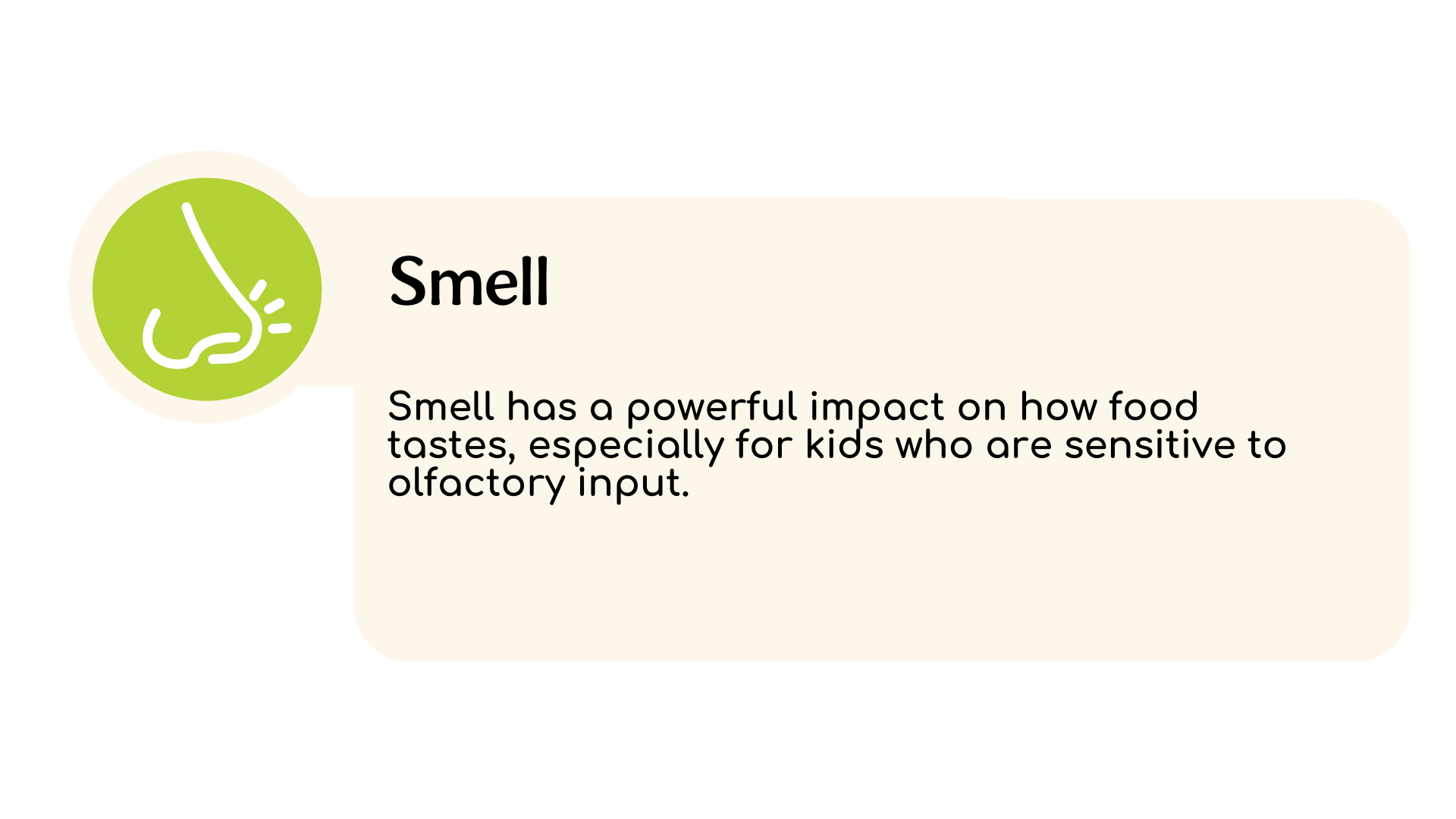
Simply tolerating the smell while they're in the same room with certain food can be challenging. And food will smell stronger as it gets closer to the child. So, we want to give children lots of
sensory exposures to the smell of the food from across the room, at the same table with them, on their plate, and then up close to their nose as the food is brought to their mouth. And we want to meet children where they are. For example, if a child in your classroom is sensitive to the smell of cooked broccoli, you may need to start by exposing the child to the smell of broccoli from a distance before expecting them to put it on their plate.
Touch (Whole Body)
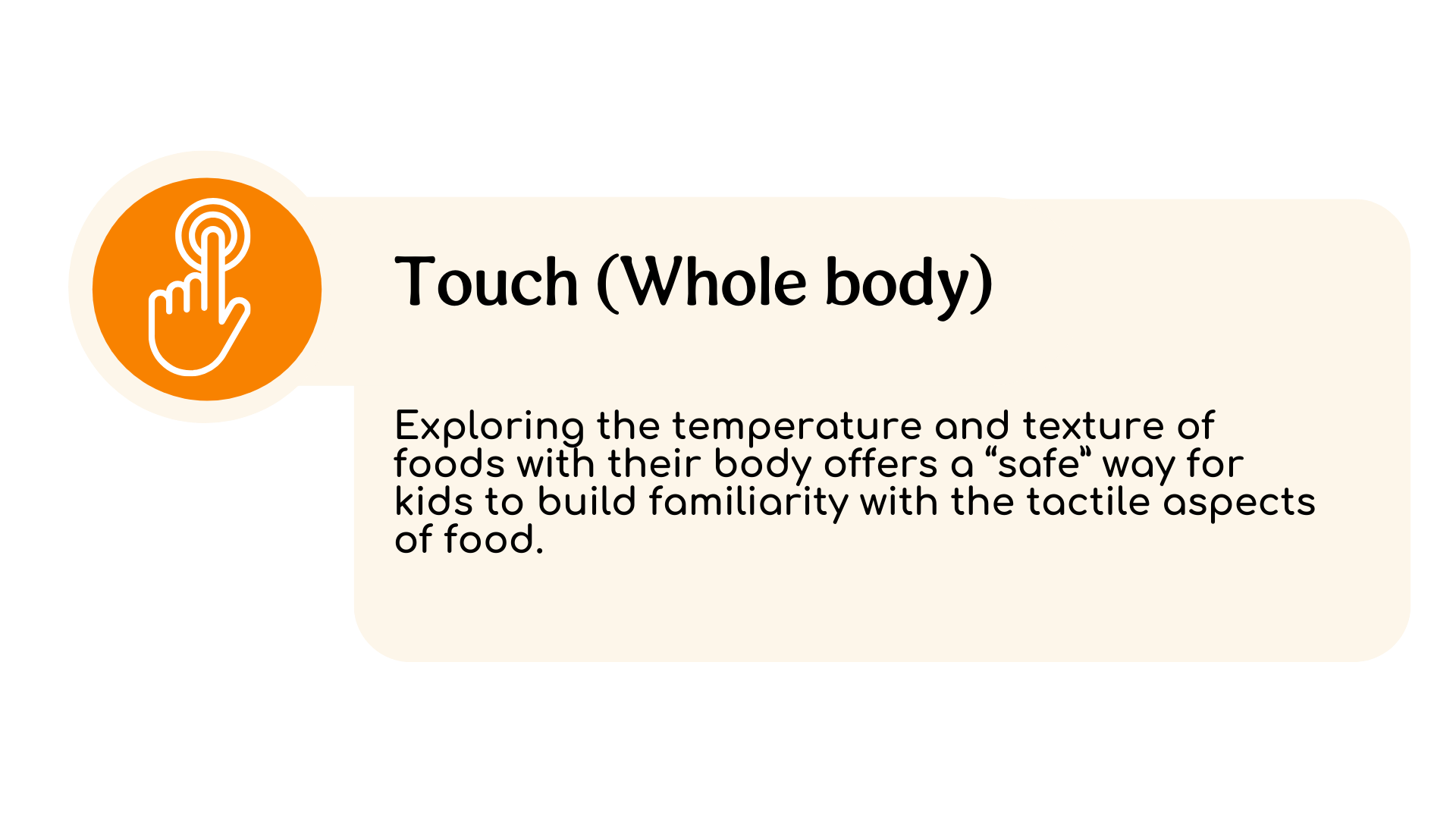
Once the child is able to tolerate the smell of food on their plate, this opens up the possibility to interact with the food using their body. This might include touching food with a utensil, stirring or serving the
food or loading the food onto a fork or a spoon. Even before a child is willing to touch it directly with their body, children can use a utensil to learn about the stickiness of oatmeal or how slippery peaches are when you scoop them onto a spoon. And for some kids, eating is a whole-body experience. We know children touch foods with their hands or fingertips, but have you ever seen kids explore foods with other parts of their body too? Maybe they rubbed a hamburger bun on their cheek to feel the texture of it or used other body parts to interact with the food.
Touch (Mouth)
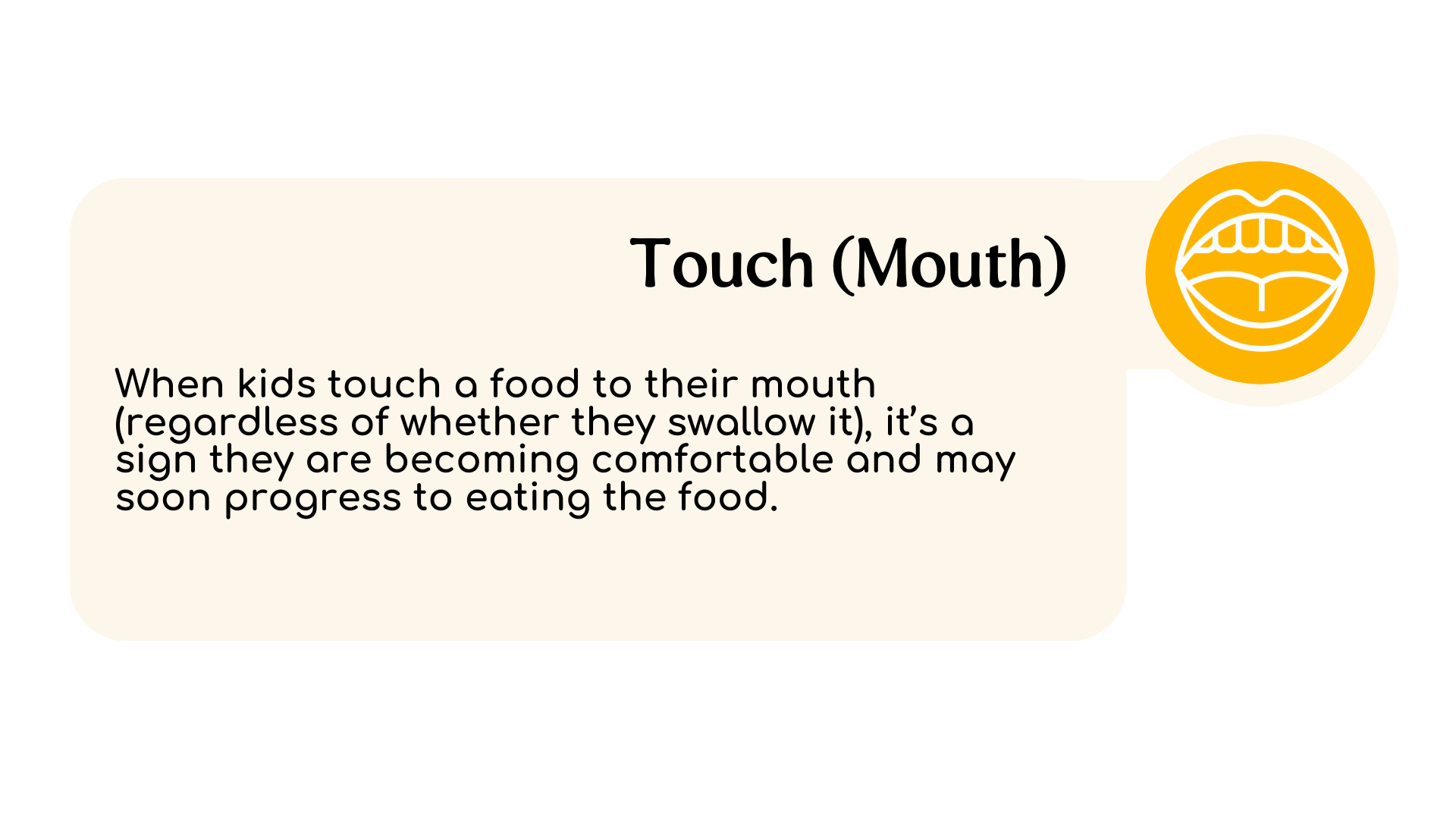
As children build comfort with new foods, they may begin to explore the foods with their mouth, lips, and tongue. As children learn about food, it's normal for them to explore how the food
feels in their mouth. They do this by licking food, biting food, or chewing food and then spitting it out and then eventually chewing and swallowing. By viewing all of these behaviors as food exploration instead of poor table manners, we're allowing them to learn about texture and feel food in their mouth, which is an important part of the eating process.
Taste
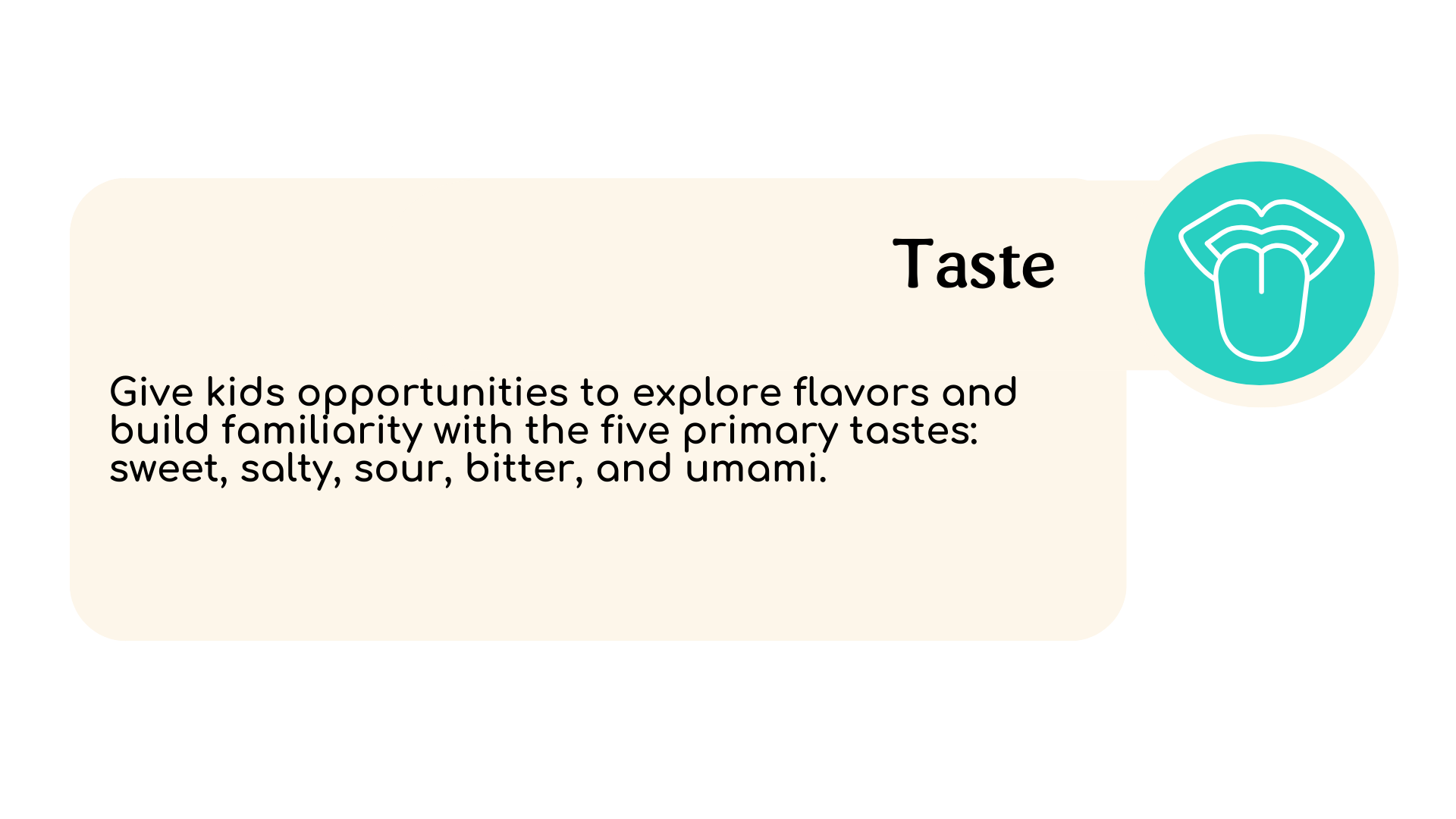
Every time a child experiments with putting food in their mouth, even if it's licking the food or trying it and spitting it back out, they are getting used to the different tastes and flavors of
food. Some kids may love to suck on a lemon slice, but for other kids just a little squeeze of lemon on their food is enough for them to learn about sour flavors. So again, we need to make sure we're meeting kids where they are as they are learning to explore these different tastes and flavors.
Sight
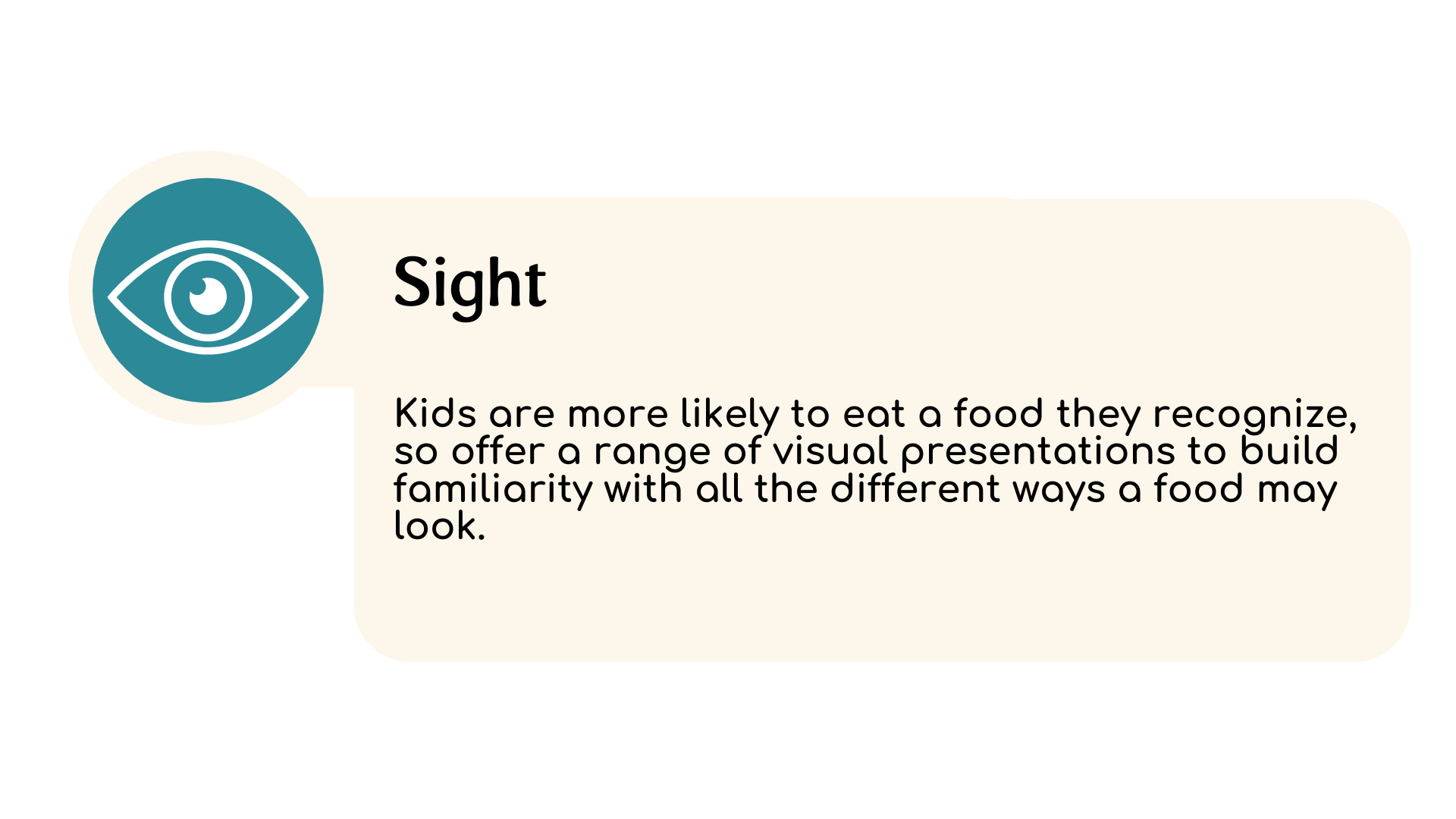
Have you heard the old saying “the eyes eat first”? How visually appealing food looks influences our appetite and willingness to try new food. We can expose children to the sensory experiences of
looking at food on the table or seeing food on their own plate to help promote food exploration.
Sounds
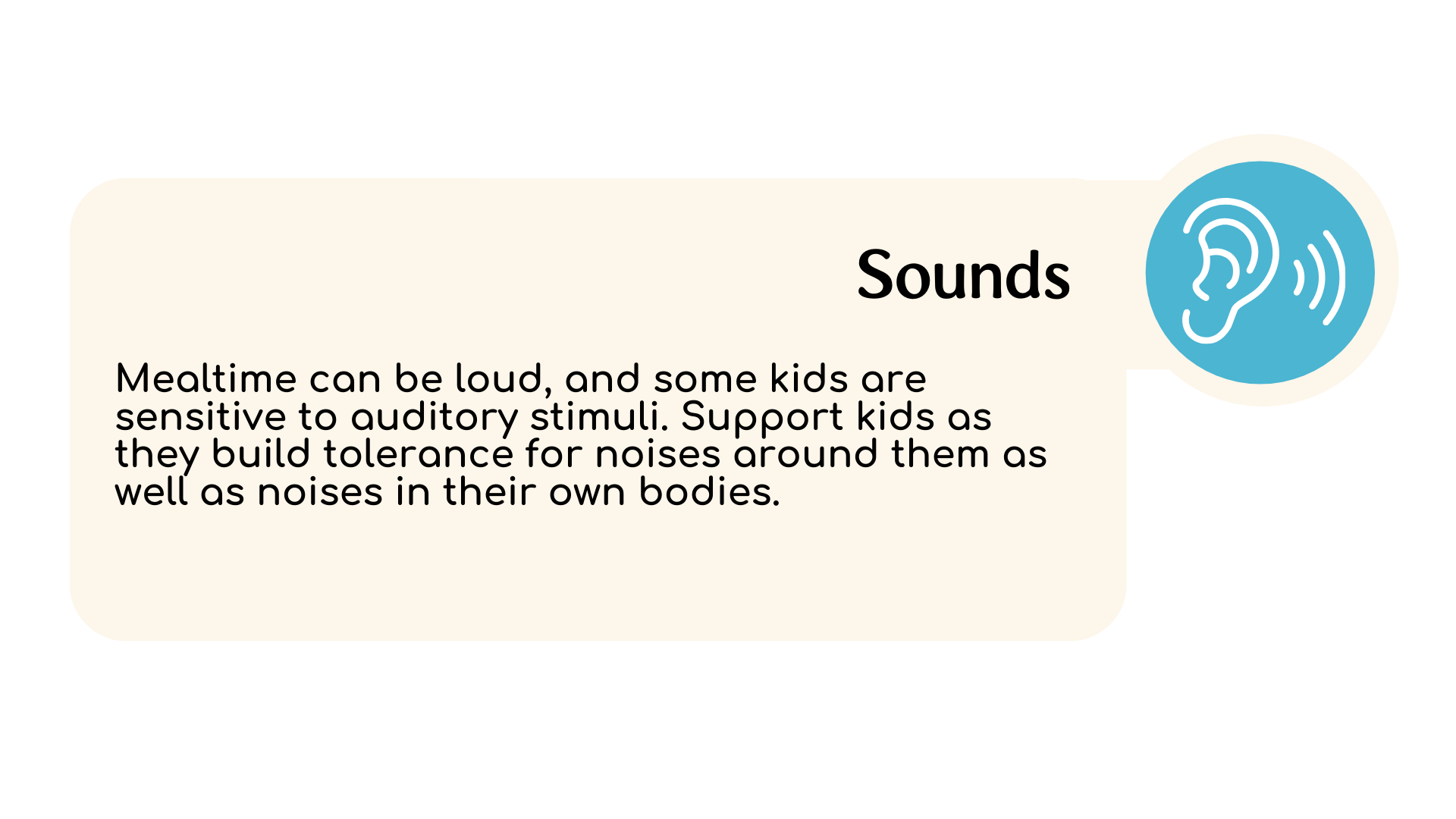
If you've ever been to a classroom during lunchtime, you know it can be loud. We need to support kids as they build tolerance for noises like the sounds of other people around them
eating, the noises of utensils scraping on a plate, and even their internal eating sounds like chewing and swallowing.
Proprioception
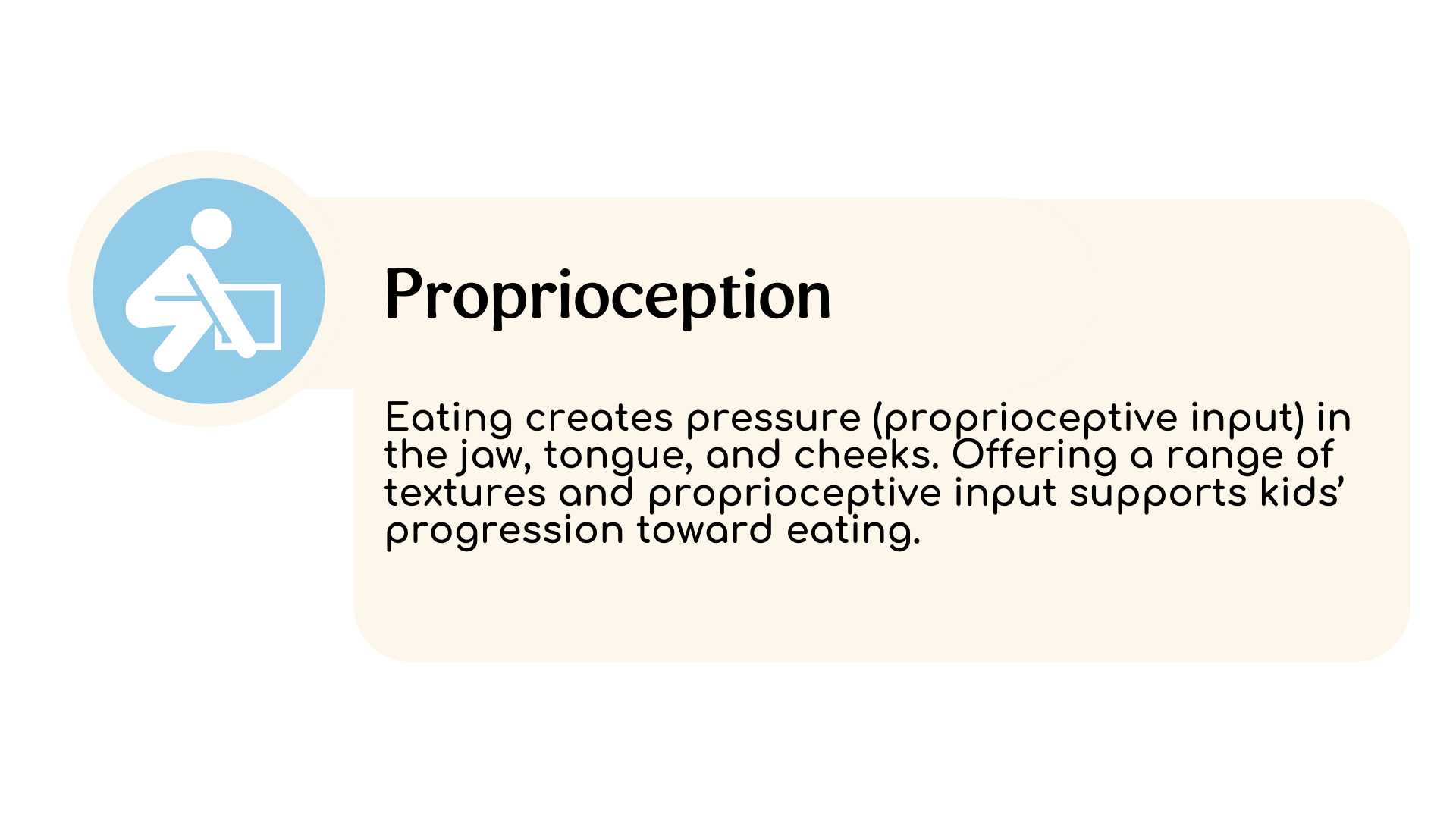
Did you know eating activates our sense of proprioception? Proprioception is one of our hidden senses and it's the feeling of pressure in our muscles and joints. Kids get exposure to this
by chewing and moving food around in their mouth or by sucking through a straw or crunching different kinds of food. Think about the feeling in your mouth when you eat a bite of yogurt and how different this is from crunching a pretzel.
Interoception
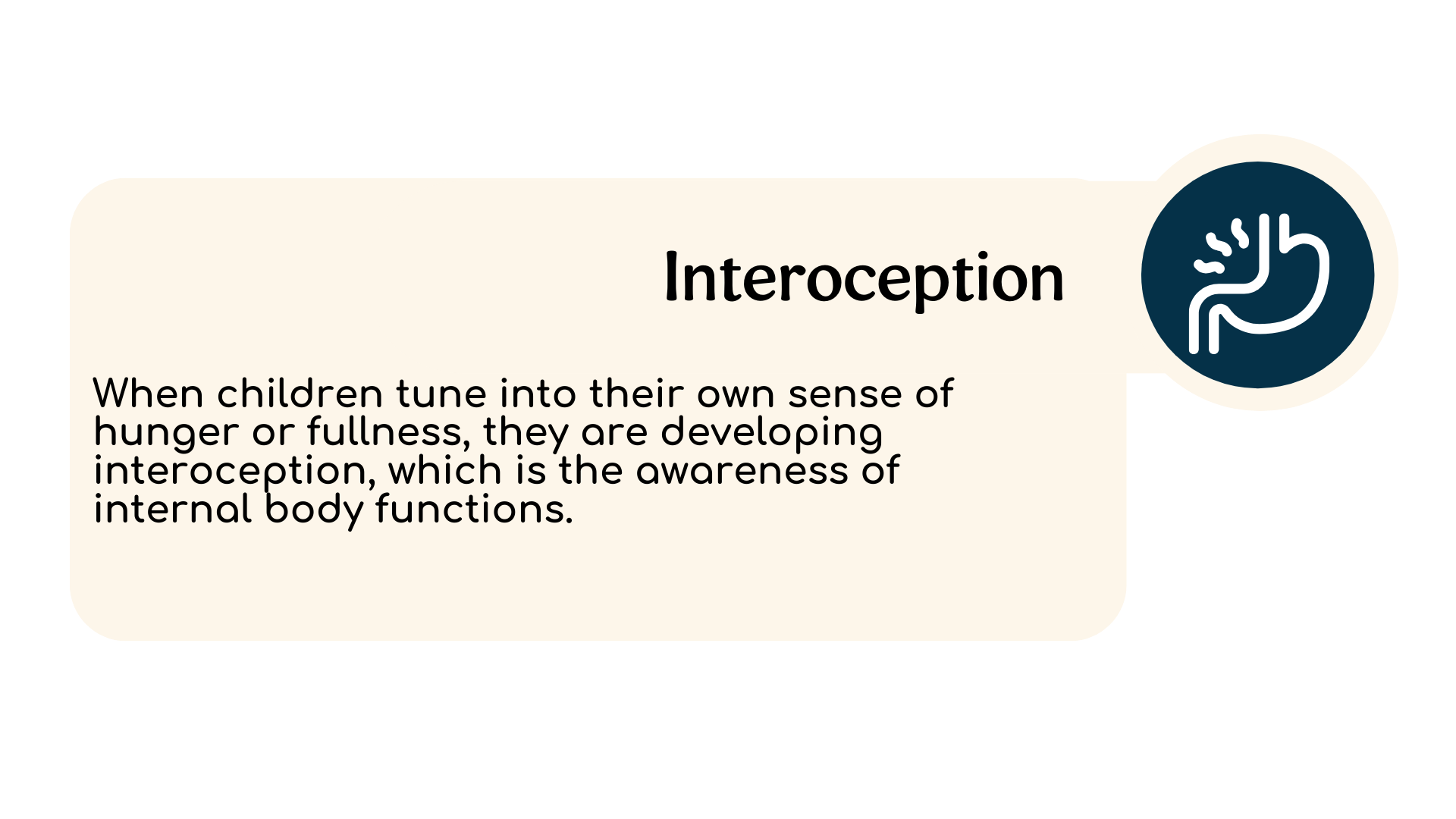
A final sensory system involved in eating is interoception, which is the awareness of our own internal bodily functions. We can support to listen to their body’s cues to eat when they feel
hungry and identify and respect their body’s cues to stop eating when they feel full.
Supporting Food Exploration
Understanding all of the different sensory experiences of eating and the role early childhood educators can play in encouraging children to interact with and eventually eat food allows us to celebrate each little step a child takes on their eating journey.
It also gives us an idea of where to start and what to try next when a child is hesitant to engage with a new food. We want to match the sensory experiences we're offering at mealtime to meet kids where they are. For example, if a child is only just recently tolerating the sight of kiwi, then we might encourage them to interact with kiwi using their other senses by scooping it onto their plate with a spoon or touching it with their fingertip or smelling it. If we try to jump straight to encouraging a child to take a bite of the kiwi, we're skipping over other important sensory exploration that builds a child's comfort and familiarity with a food. No matter where a child is in their comfort level with a new food, there's something we can do during a group mealtime in the classroom to support this child's exploration with the sensory aspects of their food.
Sometimes sensory exploration is messy. Getting messy with food is developmentally appropriate for young children AND it helps kids learn to tolerate a variety of sensory input when it comes to food. So, we need to let kids interact with their food and use all their senses to learn about each food, even if that means a little extra clean up or an extra change of clothes.
Once you understand how important sensory experiences are in food exploration and eating, you'll see the way kids interact with food in a whole new light. Now you might start celebrating when a child pokes their fingertip into a hamburger bun, or dips their celery stick in their milk, because you can appreciate that this is actually a child learning about their food and developing the familiarity that will lead to them actually eating that food.
Check out our on-demand course, Transforming Group Mealtimes: Picky Eating & Food Exploration to learn more about making the most of mealtime in your early childhood education program or home! Included are printable handouts on Using Sensory Experiences to Promote Food Exploration, Conversation Prompts, and Common ASL Signs, to support food exploration in your classroom.
- IMPACT Team
- IMPACT Team
If you're interested in learning more about sensory strategies, check out these courses:
IMPACT™ content is developed by a multidisciplinary team and makes every effort to ensure that information provided reflect evidence-based, early childhood best practices. Providers should always follow local jurisdictions and other governing bodies rules and regulations when implementing any strategy or suggestion. Any actions, or lack of actions, are not the responsibility or liability of Northwest Center Kids – IMPACT™.
All content, including the presentation thereof on this web site, is the property of Northwest Center IMPACT™, and protected by U.S. and international copyright laws. You may not copy, reproduce, distribute, transmit, modify, create derivative works, or in any other way exploit any part of copyrighted material without the prior written permission from Northwest Center.
All content, including the presentation thereof on this web site, is the property of Northwest Center IMPACT™, and protected by U.S. and international copyright laws. You may not copy, reproduce, distribute, transmit, modify, create derivative works, or in any other way exploit any part of copyrighted material without the prior written permission from Northwest Center.
Connect
-
Seattle, WA
-
impact@nwcenter.org
-
NWC Home
Policy pages
Subscribe & stay up to date
Thank you!
Copyright © 2025
IMPACT™ content is developed by a multidisciplinary team and makes every effort to ensure that information provided reflect evidence-based, early childhood best practices. Providers should always follow local jurisdictions and other governing bodies rules and regulations when implementing any strategy or suggestion. Any actions, or lack of actions, are not the responsibility or liability of Northwest Center Kids – IMPACT™. All content, including the presentation thereof on this web site, is the property of Northwest Center IMPACT™, and protected by U.S. and international copyright laws. You may not copy, reproduce, distribute, transmit, modify, create derivative works, or in any other way exploit any part of copyrighted material without the prior written permission from Northwest Center.
